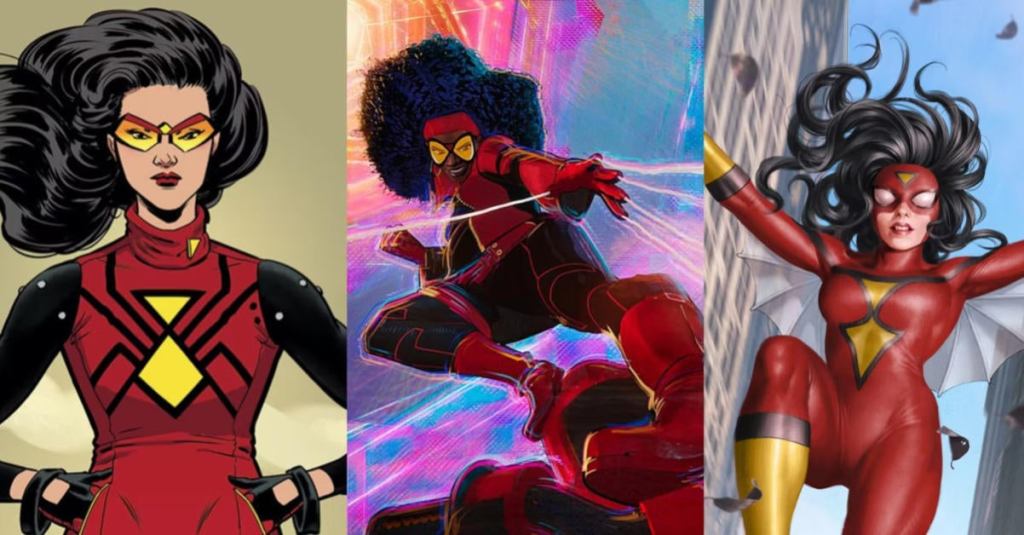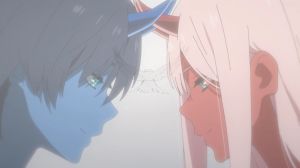Spider-Man: Across the Spider-Verse just made Jessica Drew’s Spider-Woman (Issa Rae) into an international breakout character – and with the future of the Spider-Woman brand looking bright, you can probably expect to seeing more of her in the mainstream!
Videos by ComicBook.com
The Marvel Comics history of characters named “Spider-Woman” is pretty long and convoluted; multiple women have carried the Spider-Woman name – with that roster expanding if you include the likes of “Spider-Girl,” “Spider-Gwen,” etc.
Below you’ll find a breakdown of the Marvel Comics’ history of Jessica Drew, and why she’s one of Marvel’s most enduring characters.
Spider-Woman: Jessica Drew’s Comic History Explained

Jessica Drew was the very first Marvel character to take on the Spider-Woman mantle. She first appeared in Marvel Spotlight #32 in 1977, the creation of writer Archie Goodwin, with a design by freelance artist Marie Severin. Drew was one of several characters created in the race between comic companies to secure and/or protect names adjacent to popular characters. In fact, Drew only exists because Stan Lee wanted to get a “Spider-Woman” character out first and lock down the rights, before a competitor like DC did so, and capitalized on the proximity to Spider-Man’s popularity.
Creative Confusion

However, in the first example of Drew’s ability to beat the odds, her intended one-off in Marvel Spotlight #32 sold so well that she was given a solo series. Goodwin wanted the character to be a Spider that somehow evolved into a human, but legendary Marvel editor Marv Wolfman retconned her origin and premise in a different book (Marvel Two-In-One) and made Drew a human in a strange, soapy, series, with her existence as an evolved spider being a brainwashed fiction created by the HYDRA criminal group.
Writers would continue to struggle to find a clear premise and arc for Jessica Drew (who had social anxiety issues), and in different creative hands (most notably writer Mark Greunwald), her powers were expanded to include producing fear-inducing pheromones, her supporting cast filled out, and later (under writer Michael Fleisher) her story was once again revised into that of a bounty-hunter, with the soap-opera elements of the series replaced by traditional superhero staples. Chris Claremont (X-Men icon) would hop onboard the series at #32 and establish the now-preferred retcon that Drew is a private detective. However, Spider-Woman’s sales would decline to the point that Marvel canceled the series at #50 – then went a step further by killing Jessica Drew in a final battle with her nemesis, Morgan La Fey.
But again: there was no keeping Jessica Drew down for long!
Comeback Queen

Backlash to the decision to kill Spider-Woman was so great that Marvel’s editors decided to resurrect Jessica Drew just one year after her death, in an Avengers story arc (#240-241) in 1984. Drew would ride out the 1980s popping up in various Marvel books, including (and oddly enough) being a supporting character in Wolverine’s early solo series – albeit as “Jessica Drew” and not “Spider-Woman” (Julia Carpenter had taken on the Spider-Woman mantle at the time).
Gruenwald put Drew back in costume during mid-1990s (Sensational Spider-Man Annual ’96), but he died before his larger plans for her full return could happen. Jessica Drew would continue in the Marvel Universe in her civilian/detective role into the 2000s, appearing in Spider-Woman III’s (Mattie Franklin) series as a major supporting character, as well as crossing over with fellow detective Jessica Jones in Brian Michael Bendis’ 2003 story arc in Alias.
Big Breakout: New Avengers & Secret Invasion

The mid-to-late-2000s saw Jessica Drew beat the odds yet again and become a major fan-favorite staple of the Marvel Universe. Jessica Drew (once again in costume as Spider-Woman) was included in the roster of Bendis’s New Avengers comic in 2005. With that book rekindling her popularity, Drew’s Spider-Woman was given a retelling of her origin (Spider-Woman: Origin) as well as reprints of the original series.
Jessica Drew went from being a New Avengers to being the focal point of the entire Marvel Universe in the 2009 “Secret Invasion” crossover. That story revealed the New Avengers Jessica Drew to actually be Skrull Princess Veranke, who infiltrates the Avengers and uses the death of one of her Skrull subjects (Pagon, posing as Elektra) to sow intense paranoia and distrust amongst the Marvel heroes over who was possibly a Skrull. Obviously, the main villain being a Jessica Drew imitator gave the real Drew a big arc to play out in Secret Invasion.
After Secret Invasion, Jessica Drew has finally cemented herself as a mainstay of the Marvel Universe. She would continue to appear in Avengers comics and/or story arcs throughout the 2010s, as well as the 2014 Spider-Verse comic book crossover, which is one of the main precursors to the Spider-Verse film series.
Spider-Woman Future

As far as Marvel characters go, Spider-Woman/Jessica Drew has survived walking on the razor’s edge, and finally got her due when the world was finally ready. Drew has appeared onscreen in her own short-lived animated series (September 1979 – January 1980), but Across the Spider-Verse is her first big movie adaptation. Obviously, Issa Rae’s version of Drew is a significant re-imagining of the character – one that movie fans seem to be embracing.
Spider-Man: Across the Spider-Verse is now in theaters. You can read Spider-Woman comics and stories at Marvel.








